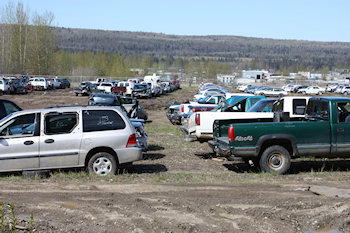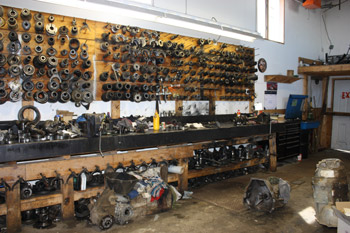Fast Facts
Below you will find some fast facts about Auto Recycling. These facts were provided by the Automotive Recyclers of Canada and the United States Environmental Protection Agency.
- Each year, nearly all of the 27 million cars around the world that reach the end of their useful life are recovered for recycling.
- Automotive recyclers now can recover nearly 80 percent of the total materials by weight from a vehicle.
- The remaining 20 percent of vehicle materials that cannot be recycled is called auto shredder residue (ASR). ASR includes plastics, rubber, wood, paper, fabric, glass, sand, dirt, and ferrous and nonferrous metal pieces.
- Five million tons of ASR are disposed of in landfills each year.
- Consumers purchasing used or reconditioned parts save 50 percent or more compared to the cost of purchasing new parts.
- More than 25 million tons of materials are recycled from vehicles each year.
- Nearly 90 percent of automotive aluminum is recovered and recycled. Although this aluminum represents less than 10 percent of the average motor vehicle by weight, it accounts for roughly half of the vehicle's value as scrap.
- Recycled parts save an estimated 80 million barrels of oil annually that would be required to produce new replacement parts
- The amount of toxic oils and fluids safely reclaimed by auto
recyclers is equivalent to eight Exxon Valdez
disasters every year!
Auto Recycling at PG Auto Wrecking
 The
Auto Recycling industry has come a long way. In an
environmentally aware age, no industry contributes more to
keeping hazardous materials out of landfills and reusing parts
that take an abundance of energy and resources to make. The
automobile is the most recycled consumer product in the world
today. In fact, 95 percent of retired autos are
processed for recycling each year. Thanks to advances in
technology, everything from floor mats and instrument panels to
upholstery, aluminum and steel can be recycled for use in a new
automobile or another consumer product.
The
Auto Recycling industry has come a long way. In an
environmentally aware age, no industry contributes more to
keeping hazardous materials out of landfills and reusing parts
that take an abundance of energy and resources to make. The
automobile is the most recycled consumer product in the world
today. In fact, 95 percent of retired autos are
processed for recycling each year. Thanks to advances in
technology, everything from floor mats and instrument panels to
upholstery, aluminum and steel can be recycled for use in a new
automobile or another consumer product.
Recyclers provide you, the consumer, with low-cost, high-quality used auto parts using modern business practices and very strict environmental regulations. They are reducing insurance rates, your repair bills and an astounding amount of pollution. Recyclers purchase "end-of-life" and accident automobiles and ensure that they are dismantled and retired in a way that protects the environment.
Each vehicle that is purchased by an Auto recycler goes through a rigorous process designed to maximize the amount of material that can be reclaimed and to minimize the environmental impact. The vehicle that you are driving today will be a source of numerous recyclable materials tomorrow. Vehicle parts offer recycling opportunities for materials such as steel, aluminum, plastics, antifreeze, and batteries, as well as whole parts such as tires, seats, engines, and alternators. Below you will find some information from the Automotive Recyclers Association of Canada's website, a great resource for learning more about the industry.
The Recycling Process
-
 Oil,
gas and operating fluids pose a significant risk
to the environment. Trained technicians carefully drain all
the fluids and store them for reuse or recycling. Special
equipment and methods are used in order to prevent any
groundwater contamination. An average of 40 litres of
fluids are removed from each vehicle and are used, re-used
or responsibly disposed of.
Oil,
gas and operating fluids pose a significant risk
to the environment. Trained technicians carefully drain all
the fluids and store them for reuse or recycling. Special
equipment and methods are used in order to prevent any
groundwater contamination. An average of 40 litres of
fluids are removed from each vehicle and are used, re-used
or responsibly disposed of.
-
Gas tanks, batteries and tires are all removed and are recycled, reused or disposed of appropriately.
-
Each vehicle is inspected to determine which parts are appropriate for re-use. The VIN number and mileage of vehicle, along with the make, model and year are recorded in order to provide accurate inventory data.
-
-
The vehicle is then sent to the dismantling area where parts are removed, inspected and readied for resale. Each part is tagged, coded and entered into a computerized inventory system before it is properly stored.
The unusable portion of the vehicle is then crushed and sent to
be shredded into fist-sized pieces for recovery. The valuable
ferrous and non-ferrous metals are then separated and reused to
make new cars and other products you buy... and the
cycle starts again